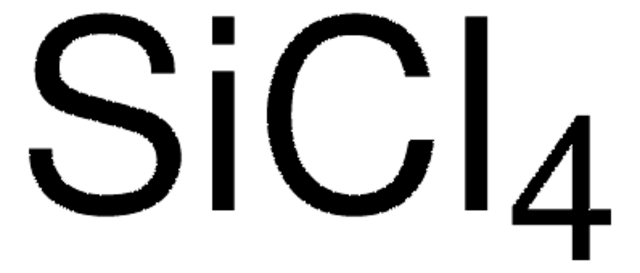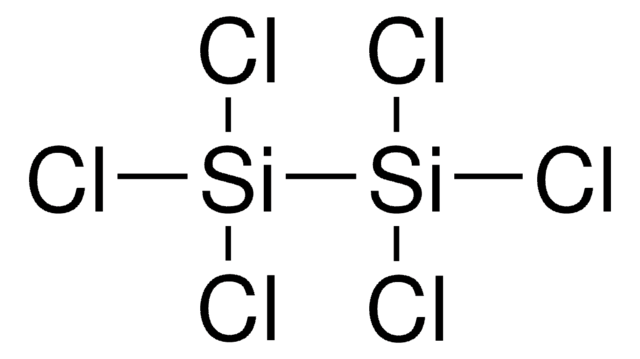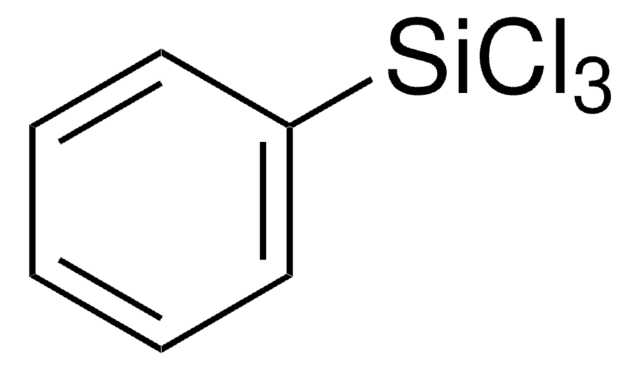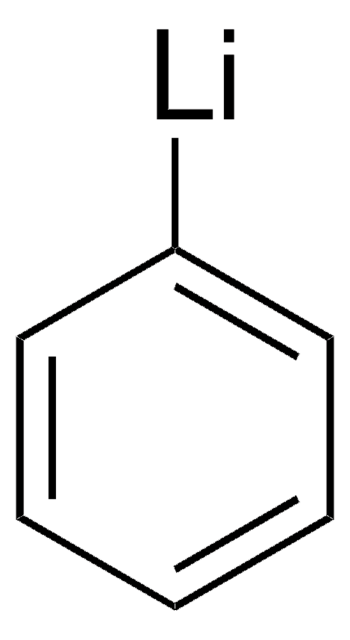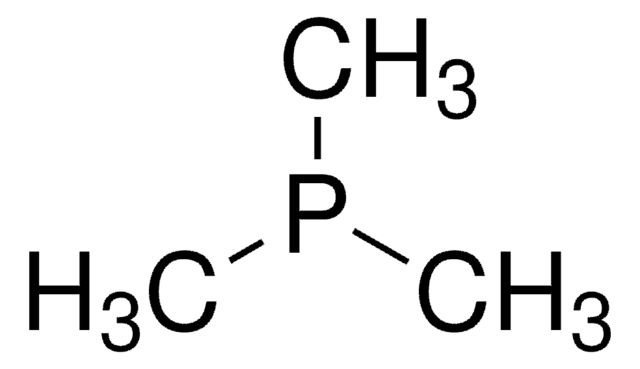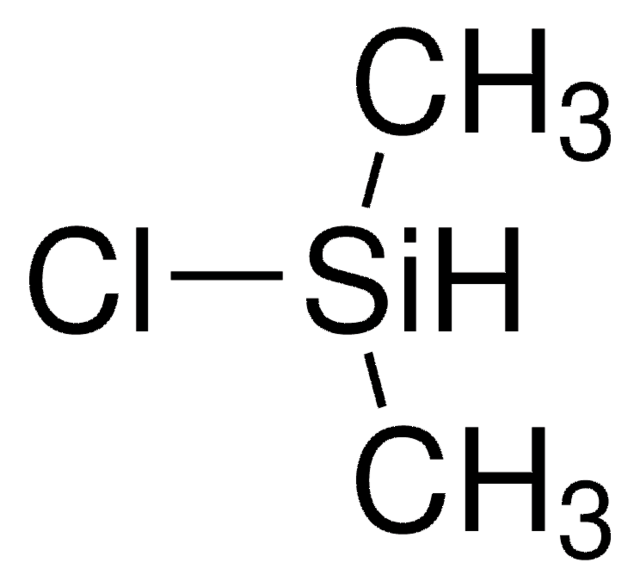175552
Trichlorosilane
99%
Sinónimos:
Hydrotrichlorosilane, Silicochloroform, Silicon chloride hydride, Trichloromonosilane
About This Item
Productos recomendados
vapor density
1 (vs air)
Quality Level
vapor pressure
9.75 psi ( 20 °C)
assay
99%
form
liquid
expl. lim.
70 %
bp
32-34 °C (lit.)
density
1.342 g/mL at 25 °C (lit.)
storage temp.
2-8°C
SMILES string
Cl[SiH](Cl)Cl
InChI
1S/Cl3HSi/c1-4(2)3/h4H
InChI key
ZDHXKXAHOVTTAH-UHFFFAOYSA-N
¿Está buscando productos similares? Visita Guía de comparación de productos
Categorías relacionadas
General description
Application
Other possible applications:
- Asymmetric reduction of N-aryl ketimines in the presence of a novel
L-valine-derived catalyst to form secondary amines.
- Hydrosilylation of imidazolinones to form chiral imidazolidinones in the presence of a 2,2′-bispyrrolidine based Lewis base organocatalyst.
- Trichlorosilane activated with chiral N-formylproline
derivatives is an effective reagent for the reduction of imines to form
enantiomerically enriched amines.
- Trichlorosilane reacts with dimethylformamide to form hypervalent hydridosilicates, which can reduce aldehydes to alcohols, imines to amines, and also for the reductive amination of aldehydes.
signalword
Danger
hcodes
Hazard Classifications
Acute Tox. 3 Inhalation - Acute Tox. 4 Oral - Eye Dam. 1 - Flam. Liq. 1 - Skin Corr. 1A - Water-react 1
supp_hazards
Storage Class
4.3 - Hazardous materials which set free flammable gases upon contact with water
wgk_germany
WGK 1
flash_point_f
<-2.2 °F - Equilibrium method
flash_point_c
< -19 °C - Equilibrium method
ppe
Faceshields, Gloves, Goggles
Elija entre una de las versiones más recientes:
¿Ya tiene este producto?
Encuentre la documentación para los productos que ha comprado recientemente en la Biblioteca de documentos.
Los clientes también vieron
Nuestro equipo de científicos tiene experiencia en todas las áreas de investigación: Ciencias de la vida, Ciencia de los materiales, Síntesis química, Cromatografía, Analítica y muchas otras.
Póngase en contacto con el Servicio técnico